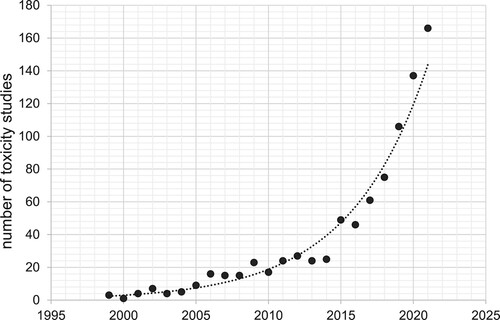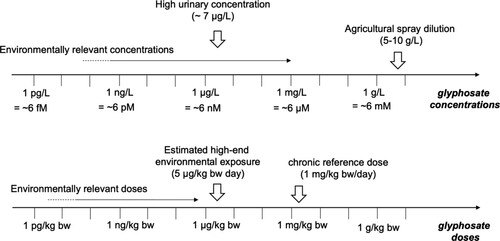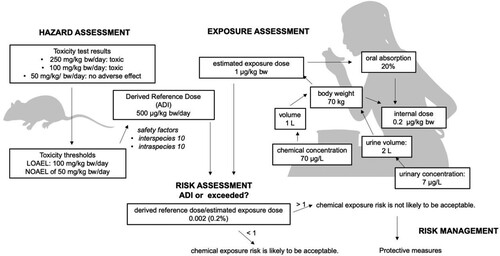Figures & data
Figure 1. An increasing number of toxicity studies mention the use of environmentally relevant concentration(s)/dose(s). We analysed the number of PubMed abstracts and titles containing the words ‘environmentally relevant concentration’ or ‘environmentally relevant dose’ among the abstracts containing the word ‘toxicity’ (Performed on July 27st, 2022).

Figure 2. Defining environmentally relevant doses or concentrations for glyphosate. High urinary concentrations correspond to the levels encountered in applicator studies, but also occasionally in some biomonitoring studies of the general population as in the recent National Health and Nutrition Examination Survey (CDC Citation2022) For the general public, estimated high-end environmental exposures originate mostly from dietary exposure. Exposures of bystanders or residents are poorly characterized. Environmentally relevant concentrations refers to the glyphosate concentrations which are typically found in the food chain or in environmental samples.

Figure 3. Overview of the chronic health risk assessment of dietary exposures to glyphosate – switching from biomonitoring to risk assessment. Considering that the high-end of glyphosate urinary levels resulting from environmental exposures is approximately 7 μg/L (Gillezeau et al. Citation2019), it can be estimated that environmental exposures to glyphosate result in an internal dose of 0.2 µg/kg/bw and an external dose of 1 µg/kg/bw. Glyphosate concentrations cannot be considered as environmentally relevant if they are far higher than these doses, except in the case of relatively high applicator or occupational exposures.

Data availability statement
This manuscript is a review and do not contain experimental data. All the results reviewed are from published studies.
